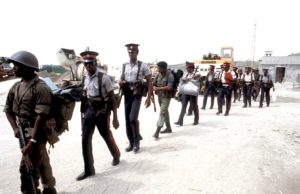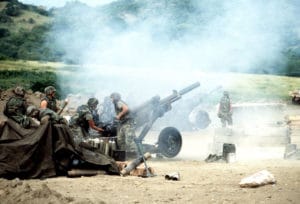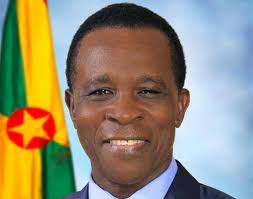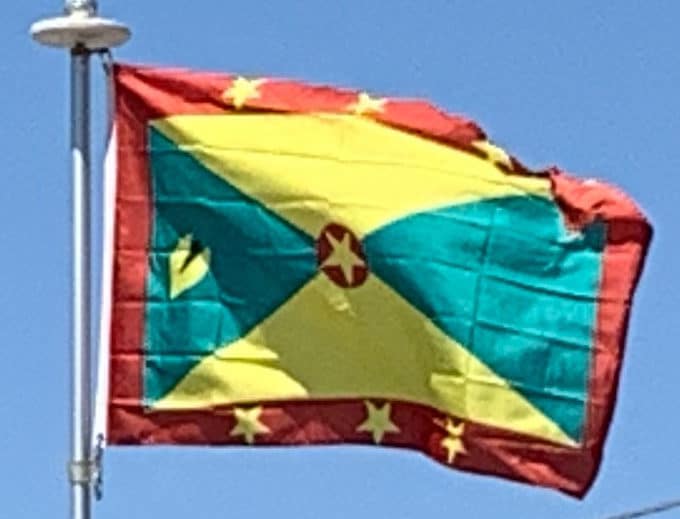On 25 October 1983, combined forces from the United States and from the Regional Security System (RSS) based in Barbados invaded Grenada in an operation code-named Operation Urgent Fury. The US stated this was done at the behest of the governments of Barbados and Dominica and the Governor-General of Grenada, Sir Paul Scoon. Progress was rapid and within four days the Americans had removed the military government of Hudson Austin.

The invasion was heavily criticized by the governments of Britain, Trinidad and Tobago, and Canada. The United Nations General Assembly condemned it as “a flagrant violation of international law” by a vote of 108 in favor to 9, with 27 abstentions. The United Nations Security Council considered a similar resolution, which was supported by 11 nations. However, the United States vetoed the motion.

After the invasion, the pre-revolutionary Grenadian constitution came into operation once again. Eighteen members of the PRG/PRA were arrested on charges related to the murder of Maurice Bishop and seven others. The 18 included the top political leadership of Grenada at the time of the execution, along with the entire military chain of command directly responsible for the operation that led to the executions. Fourteen were sentenced to death, one was found not guilty, and three were sentenced to 45 years in prison. The death sentences were eventually commuted to terms of imprisonment. Those in prison have become known as ‘the Grenada 17’.
Grenada Since 1983:
When US troops withdrew from Grenada in December 1983, Nicholas Brathwaite of the National Democratic Congress was appointed Prime Minister of an interim administration by Governor-General Scoon until elections could be organised. The first democratic elections since 1976 were held in December 1984, and were won by the Grenada National Party under Herbert Blaize, who served as Prime Minister until his death in December 1989.
Ben Jones briefly succeeded Blaize as Prime Minister and served until the March 1990 election, which was won by the National Democratic Congress under Nicholas Brathwaite who returned as Prime Minister for a second time until he resigned in February 1995. He was succeeded by George Brizan who served for a brief period until the June 1995 election which was won by the New National Party under Keith Mitchell, who went on to win the 1999 and 2003 elections, serving for a record 13 years until 2008. Mitchell re-established relations with Cuba and also reformed the country’s banking system, which had come in for criticism over potential money laundering concerns.

In 2000–02, much of the controversy of the late 1970s and early 1980s was once again brought into the public consciousness with the opening of the truth and reconciliation commission. The commission was chaired by a Roman Catholic priest, Father Mark Haynes, and was tasked with uncovering injustices arising from the PRA, Bishop’s regime, and before. It held a number of hearings around the country. Brother Robert Fanovich, head of Presentation Brothers’ College (PBC) in St. George’s tasked some of his senior students with conducting a research project into the era and specifically into the fact that Maurice Bishop’s body was never discovered. Paterson also uncovered that there was still a lot of resentment in Grenadian society resulting from the era and a feeling that there were many injustices still unaddressed.
